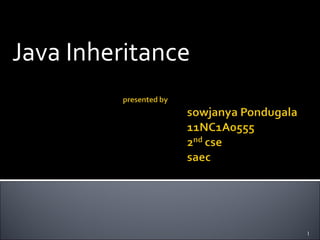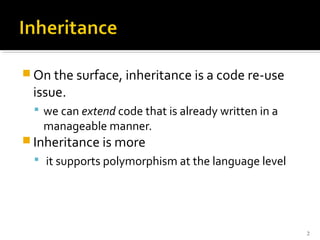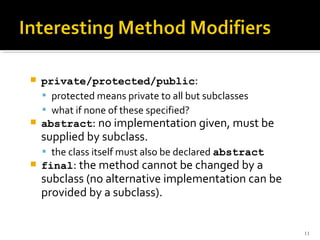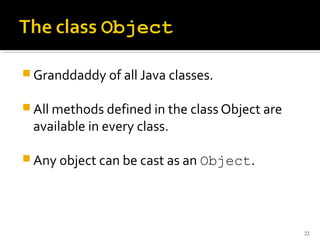This document provides an overview of inheritance in Java. It discusses how inheritance allows code reuse by extending existing classes and creating subclass hierarchies. Inheritance supports polymorphism by allowing subclasses to override methods while still being treated as their parent type. The document uses examples like an Employee class hierarchy to illustrate inheritance concepts and how inheritance enables writing code that can handle various object types without knowing their specific class.


























